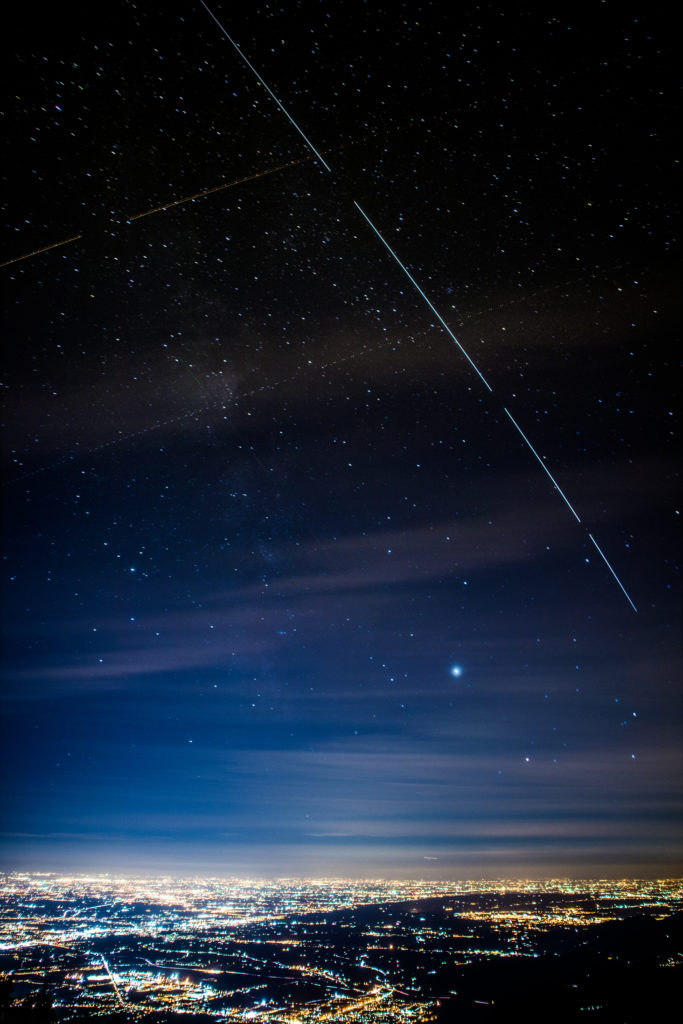La Stazione Spaziale Internazionale orbita sopra le nostre teste oltre l’atmosfera alla quota di circa 300 chilometri, viaggiando a 7.66 km al secondo ovvero a 27. 576 km all’ora. Percorre un’orbita completa in poco più di un’ora e mezza. Non dispone di luci esterne potenti e per vederla è necessario che passi sopra di noi poco dopo il tramonto o poco prima dell’alba in modo da riflettere la luce del sole. Dal monte Pizzoc, sopra Vittorio Veneto, ho atteso il suo passaggio. La scia bianca che si vede in cielo è il riflesso del sole che l’astronave in corsa ha impresso sul sensore della fotocamera. È spezzata in quattro segmenti perché la foto è in realtà la somma di quattro scatti della durata di 30 secondi ciascuno. La pianura illuminata in basso, il pianeta Giove nel cielo stellato e la stazione spaziale in transito sono i protagonisti di questa immagine.

The International Space Station orbits over our heads beyond the atmosphere at an altitude of about 300 kilometers, traveling at 7.66 km per second or 27. 576 km per hour. Go through a complete orbit in just over an hour and a half. It does not have powerful external lights and to be able to see it, the Station has to fly over us shortly after sunset or just before dawn to reflect the sunlight, still or already visible from that height. From Mount Pizzoc, above Vittorio Veneto, Italy, I awaited its passage. The white trail you see in the sky is the trace of the reflected sun that the spaceship in its stroke has impressed on the camera sensor. It is broken into four segments because the photo is actually the sum of four shots lasting 30 seconds each. The sparkling plain at the bottom, the planet Jupiter in the starry sky and the space station in transit are the main actors of this shining spectacle.

